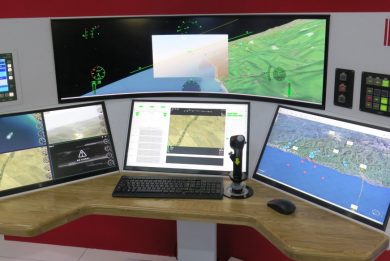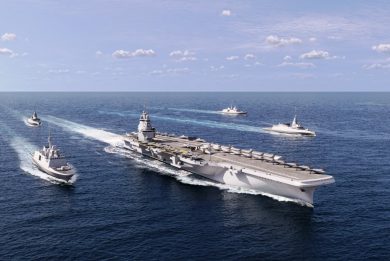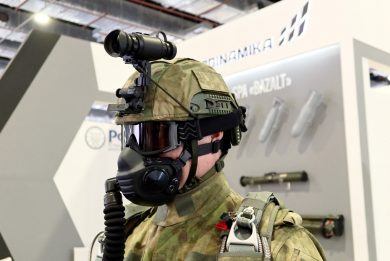Nevskoye Design Bureau is working to shape the appearance of the future aircraft carrier
The Nevskoye Design Bureau (Proektno-Konstruktorskoye Bureau, PKB, part of the United Shipbuilding Corporation, USC) is working on shaping the appearance of a future aircraft carrier for the Russian Navy. The new design was unveiled at the International Naval Defence Show (IMDS) “Fleet-2024” in Kronshtadt.
According to the corporation, Nevskoye PKB has been working on shaping the appearance of a possible future aircraft carrier for the Russian Navy within the framework of the state defence order (Gosoboronzakaz, GOZ) and initiative developments since 2010. At present, the technical and architectural design of a light aircraft carrier with a gas turbine power plant (codenamed “Varan”) has been finalised. Its total displacement is about 45,000 tonnes, and its maximum speed is 26 knots. The carrier-based air group includes 53 aircraft, of which 20 uncrewed aerial vehicles (UAVs). Take-off operations are carried out thanks to electromagnetic catapults.
The Nevskoye PKB is also developing a project for nuclear powered aircraft carrier. It will be able to be used for both conventional and vertical takeoff aircraft, as well as UAVs. To ensure their takeoff, the ship’s design provides for the simultaneous presence of a ski jump with two starting positions and electromagnetic catapults.
According to the USC representative, the future Russian aircraft carrier being developed at the Nevsky PKB is comparable in tactical and technical characteristics to the French Navy aircraft carrier, and should exceed it in certain key features, including the number of shipborne aircraft in the aviation group. A high degree of automation of the ship’s systems and complexes will reduce the number of personnel and improve the living conditions of the crew.
As USC emphasizes, the experience gained during the design and construction of a light aircraft carrier, the “Varan”, will allow, taking into account the introduction of artificial intelligence technologies and unmanned aircraft, to create a scientific and technical base for shaping the appearance of a small or uncrewed promising aircraft carrier with UAVs capable to accomplish different missions.
According to the former Deputy Chief of the Navy General Staff, retired Vice-Admiral Vladimir Pepelyaev, in the future Russia needs to build ships of all classes, without giving priority to any. Answering the question of which classes of ships should be given priority during construction in modern conditions, he noted: “When building new ships, there is no need to make any priorities. Each ship has its own mission.”
“There are ships that operate in the near sea zone that are responsible for maintaining border security in their areas of responsibility. There are ships designed to operate in the far sea zone, for sailing in the Oceans, which have other types of mission, for example showing the flag,” Pepelyaev explained.
“Now what kind of ships do we have [in the far sea zone]? We have are frigates, that can operate in both zones. I would like to have ‘universal ships’ of the destroyer class, with a large array of weapons and the capacity to operate anywhere in the Oceans around the world,” the vice-admiral said.
As for aircraft carriers, according to him a country that has the appropriate scientific, financial and industrial potential can have them. What are they needed for? “If we want our ships to sail to the far Ocean zone, then they need air cover. Our aircraft carriers primary mission has always be to ensure the air defence of ship formations. In Syria, their aircraft also carried out strike missions. Another task is to cover the deployment of fleet forces in combat areas. These are the tasks for which we need aircraft carriers,” Pepelyaev concluded.
Photo by N. Morris




